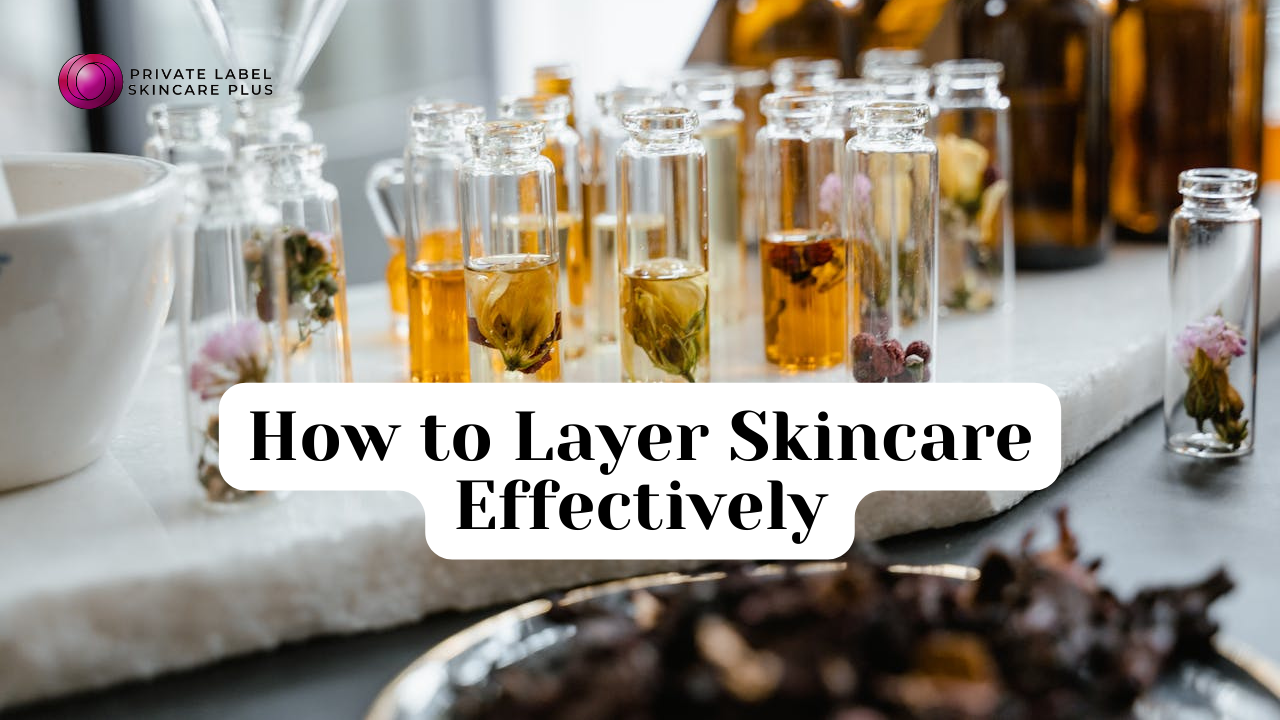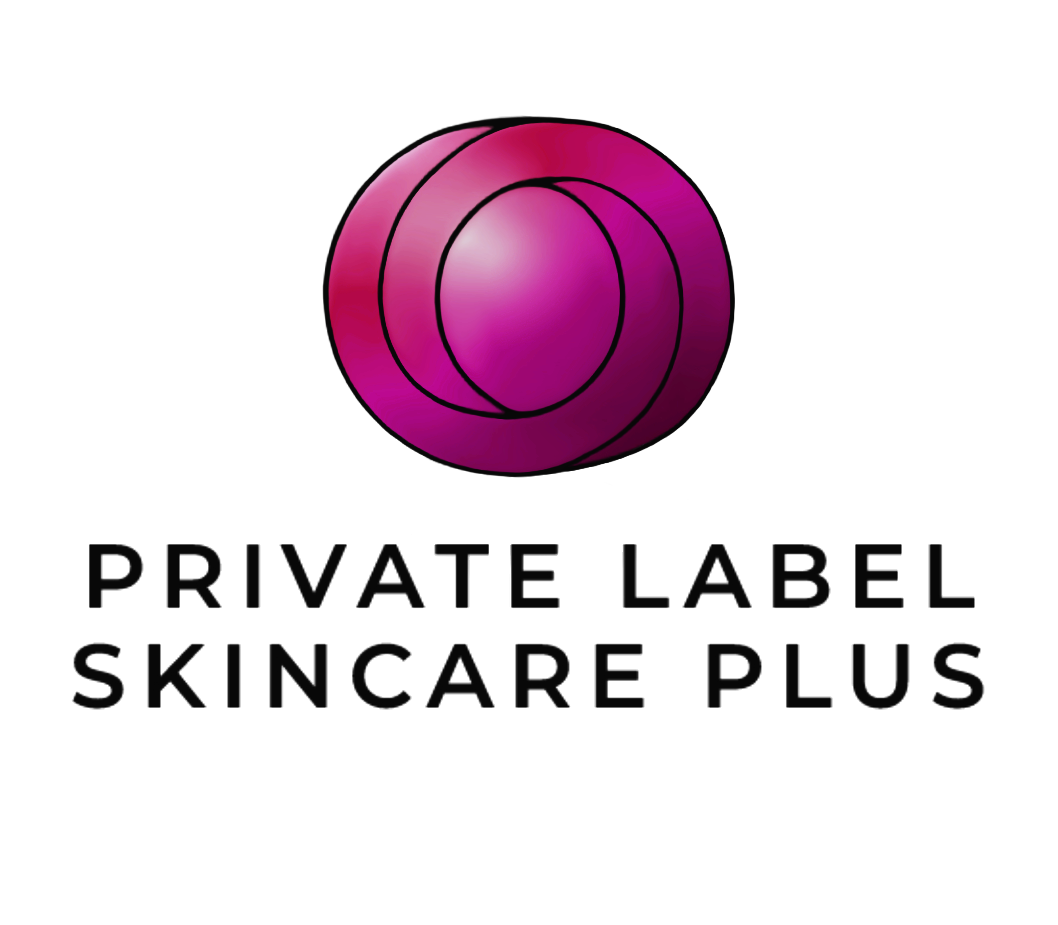In skincare, the order in which you apply products – known as layering – can make all the difference. For skincare brands, it’s crucial to understand and communicate the importance of layering. This ensures products work at their best and customer satisfaction and loyalty. Here, we’ll break down the basics of layering so you can create products that work together in harmony.
Skincare Layering
Layering is the process of applying products in a specific order to make them work best. The order matters because some products need to penetrate the skin first, and others need to protect or lock in moisture. Key principles of layering are:
- Order: The general rule is to apply products from thinnest to thickest so lighter products can penetrate the skin before heavier ones create a barrier.
- Texture: The texture of each product determines its place in the routine. Water-based products are applied before oil-based products.
- Compatibility: Not all ingredients work together. For example, applying retinol after an exfoliating acid can cause irritation.
For skincare brands, it’s vital to create products that work well individually but also work together when layered. So the consumer has a seamless experience.
The Benefits of Proper Layering in Skincare Routines
Proper layering allows products to absorb and work better. When products are applied in the right order active ingredients can penetrate deeper into the skin for better results. Plus, layering minimizes the risk of adverse reactions as it prevents overloading the skin with too many active ingredients at once.
For brands it means educating customers on layering increases product and customer satisfaction. When customers see it work, they will trust the brand more.
Skincare Layering Guide
1. Cleansing
The base of any skincare routine is cleansing. It removes impurities, excess oil and makeup, a clean canvas for the products that follow. Skincare brands should have a range of cleansers—oil-based and water-based—for different skin types and preferences.
2. Toning
Toners help prepare the skin for better absorption of serums and moisturizers. They can also balance the skin’s pH and add extra hydration. Brands should have toners that address specific concerns—hydration, exfoliation or pore tightening.
3. Serums
Serums are concentrated treatments that target specific skin concerns—wrinkles, dark spots, or acne. They should be applied after toning and before moisturizing. For optimal layering, brands should have water-based serums that can be followed by oil-based if needed.
![]()
4. Eye Creams
The skin around the eyes is delicate. Eye creams should be applied after serums but before moisturizers. Brands should focus on formulations that address puffiness, dark circles, and fine lines without being too heavy.
5. Moisturizers
Moisturizers lock in hydration and seal in the active ingredients from the previous steps. They are for all skin types. Brands should have a range of moisturizers—from lightweight gels to richer creams—for different needs.
6. Sunscreen
Sunscreen is a non-negotiable final step in the morning routine. It protects the skin from harsh UV rays and should be the last layer so that previous products are not diluted or disrupted. Brands should have sunscreens that blend seamlessly over other skincare products without leaving a white cast or greasy residue.
Formulation Considerations for Brands
When formulating skincare products, brands must consider how each product will work with others in a routine. This means:
- Compatibility: Active ingredients in different products shouldn’t counteract each other or cause irritation when layered.
- Testing and Stability: Products should be tested together to ensure they work and are stable when used together. This is especially important for active ingredients like vitamin C, retinol, and acids.
- Texture and Absorption Rate: The texture of each product affects its position in the skincare routine. Brands should have products with different absorption rates that fit their layering sequence.
Custom Formulations and Private Label
For brands looking to stand out in a crowded market custom formulations are a great opportunity. By working with private label manufacturers, brands can create products that work well in a layered routine. This not only enhances product performance but also allows brands to offer solutions for their target market.
Custom formulations can be everything from adjusting the concentration of active ingredients to creating unique textures that blend with other products in the range. For example, a brand might create a lightweight serum that absorbs quickly, followed by a richer moisturizer that seals in the benefits without feeling heavy.
Teaching Consumers to Layer Skincare
To get the most out of their skincare routine, brands should provide clear and simple instructions on how to layer. This can be done through:
- Packaging: Step-by-step guides on product packaging.
- Digital Content: Educational content on brand websites, blogs, and social media.
- Transparency: Be transparent about ingredient interactions and how to use each product.
By teaching consumers, they will get better results and, therefore, more satisfaction and loyalty.
Final Thoughts
Skincare layering is a key to getting the most out of your products and customer satisfaction. For skincare brands, understanding layering and creating products that work together is crucial. By focusing on formulation, testing, and consumer education, brands can create skincare lines that deliver amazing results and customer loyalty.
If you’re a skincare brand looking to create products that work in a layered routine, consider working with a private-label manufacturer. Custom formulations for specific skin care needs can help you stand out in a crowded market and give your customers a better skincare experience.


